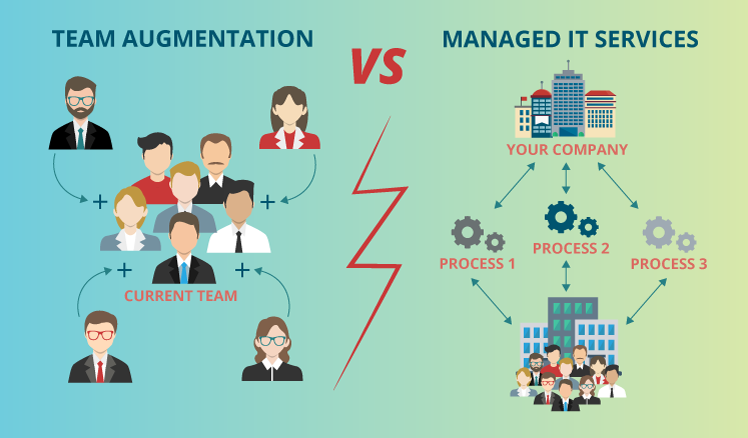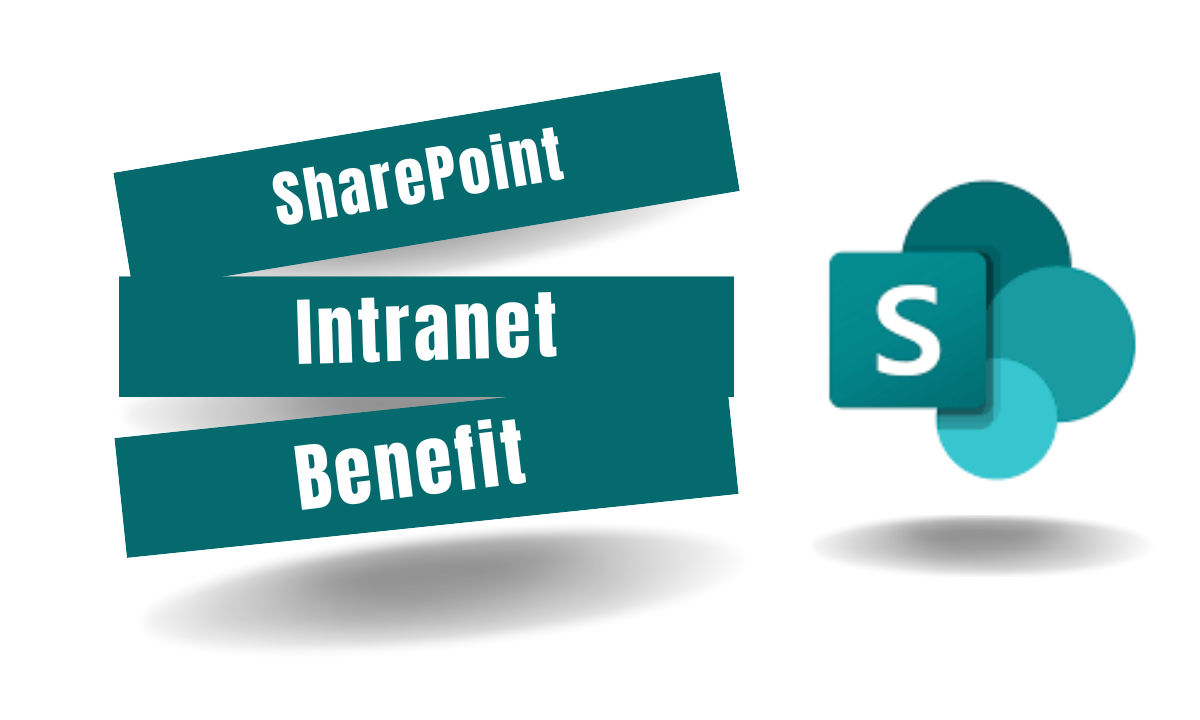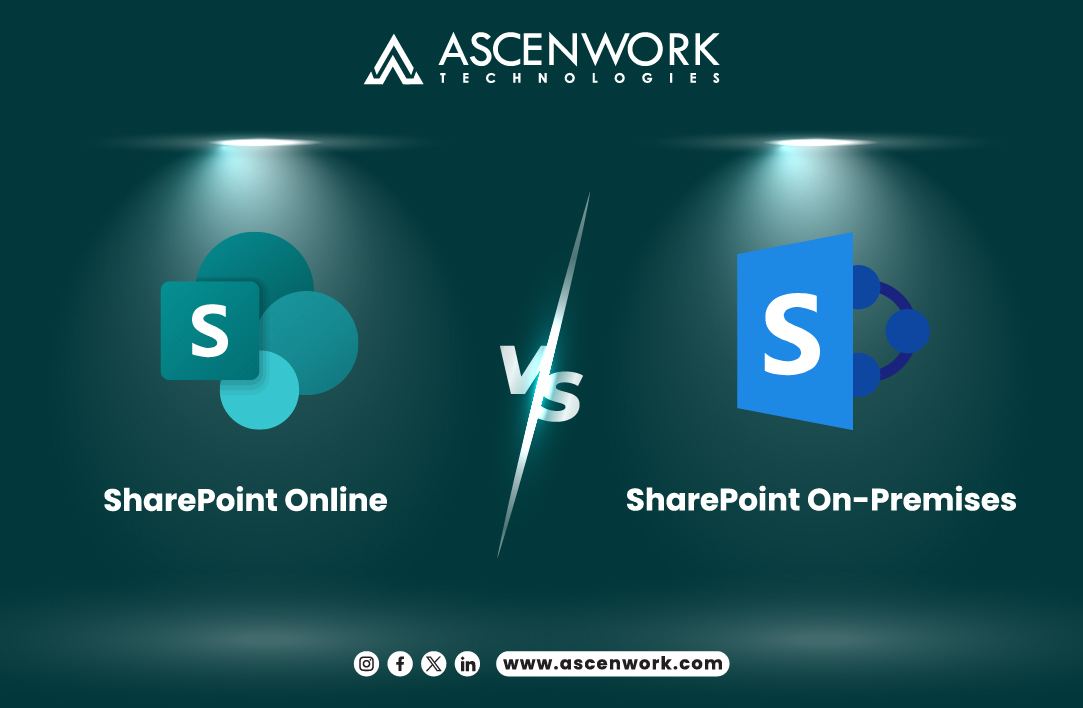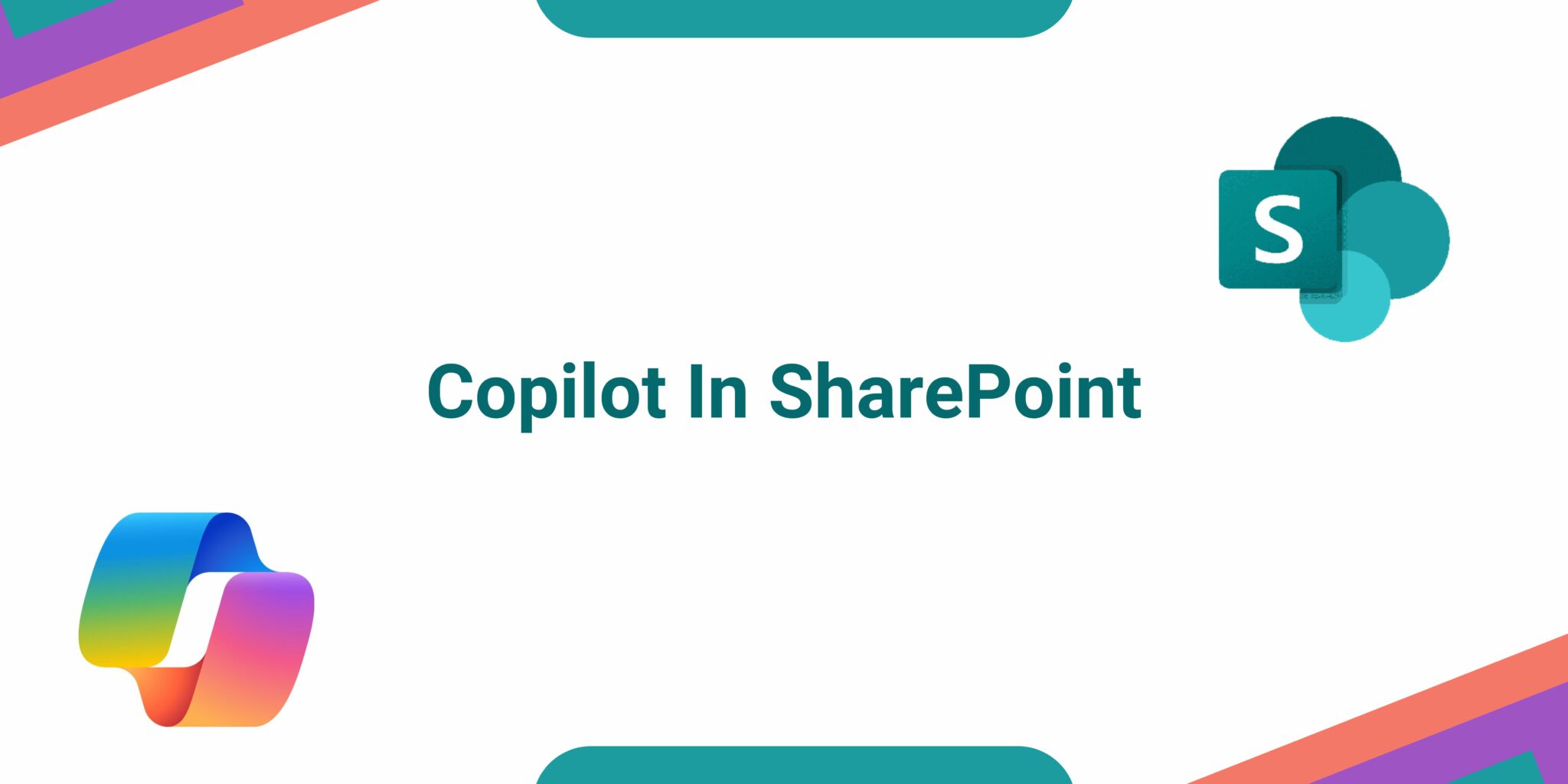
In the ever-evolving landscape of IT solutions, businesses are often faced with the critical decision of how to effectively manage their resources and address technological needs. Two prominent approaches in this regard are Staff Augmentation and Managed Services. While both aim to optimize operations and enhance productivity, they operate on distinct principles and offer unique sets of benefits and challenges.
Staff Augmentation involves the temporary integration of external talent into an organization’s workforce to supplement existing teams and skills. On the other hand, Managed Services entail outsourcing specific IT functions to third-party providers, who assume responsibility for the delivery and management of these services.
In this comprehensive exploration, we delve into the intricacies of Staff Augmentation and Managed Services, examining their respective processes, pros, cons, and types. By understanding the nuances of each approach, businesses can make informed decisions to align their IT strategies with their organizational goals and objectives.
What is IT Staff Augmentation?
IT Staff Augmentation isn’t just about filling gaps; it’s about unlocking potential. Seamlessly integrate top-tier talent into your workforce to tackle challenges head-on and drive projects to success. Gain access to specialized expertise precisely when and where you need it, without the overhead of long-term commitments. It’s flexibility, efficiency, and a strategy for success in today’s dynamic business landscape.
Key Takeaways
Both Staff Augmentation and Managed Services offer unique advantages and considerations. While staff augmentation provides flexibility and control over resources, managed services deliver comprehensive solutions and risk mitigation. Ultimately, the choice between these models depends on the specific needs, objectives, and preferences of each organization.
Pros of IT Staff Augmentation
Flexibility
IT staff augmentation provides flexible scaling for teams, adapting to project needs, optimizing efficiency, and minimizing costs without long-term contracts.
Access to Specialized Skills
IT staff augmentation offers access to diverse specialized skills, driving innovation and project precision, elevating outcomes with seasoned professionals.
Cost-Effectiveness
IT staff augmentation provides cost-effective solutions for organizations, minimizing expenses and maximizing returns by engaging external talent strategically.
Agility
IT staff augmentation fosters agility in businesses, enabling rapid resource scaling to adapt to market changes, technology shifts, and challenges.
Direct Oversight
IT staff augmentation grants direct oversight, empowering organizations to monitor progress, align with objectives, and mitigate risks while maintaining quality standards.
Enhanced Collaboration and Knowledge Transfer
IT staff augmentation promotes collaboration, fostering cross-functional teamwork, idea exchange, and skills development, enhancing outcomes, fostering learning, and driving innovation.
Cons of IT Staff Augmentation
Integration Challenges
Integrating external talent presents communication and cultural alignment challenges. Effective onboarding and integration strategies are vital for seamless collaboration and efficiency
Limited Accountability
IT staff augmentation places primary project responsibility on the hiring organization, necessitating clear communication, robust management, and defined metrics for successful outcomes.
Dependency on External Resources
Heavy reliance on external talent may limit internal capacity and strategic planning. Balancing workforce management with talent development minimizes dependency risk.
Communication Challenges
Clear communication is vital for augmented team success. Overcoming language barriers, time zones, and cultural differences requires protocols, technology, and openness.
Potential for High Costs
IT staff augmentation’s cost-effectiveness can diminish over time due to cumulative expenses. Thorough analysis, negotiation, and monitoring mitigate cost escalation risks.
Resource Management Complexity
Balancing internal and external resources in augmented teams can complicate resource management. Clear roles, tools, and collaboration foster efficiency.
Process of IT Staff Augmentation
Identify Needs
Assessment starts by identifying project needs, skill gaps, and required expertise. Understanding objectives determines precise talent requirements for IT augmentation.
Define Requirements
After identifying talent needs, organizations create job descriptions specifying required skills, qualifications, and experience levels for IT staff augmentation roles.
Source Talent
After defining talent needs, organizations source external talent through recruitment agencies, freelance platforms, or consulting firms, ensuring alignment with criteria.
Screening and Selection
Organizations rigorously assess candidates’ skills, experience, and cultural fit through interviews, assessments, and reference checks for IT staff augmentation.
Onboarding and Integration
Selected external talent undergo onboarding to familiarize yourself with culture, processes, and project requirements, ensuring smooth integration and effective collaboration.
Management and Oversight
Organizations manage and oversee augmented staff, aligning them with project goals, setting expectations, and monitoring progress, ensuring successful execution.
Performance Evaluation
Regular evaluations assess augmented staff’s contribution, reviewing deliverables, gathering feedback, and ensuring adherence to quality and timelines for optimization.
Transition or Extension
IT staff augmentation transitions involve either staff exiting or extending based on project continuity, with lessons learned and knowledge transfer.
Types of Staff Augmentation
Skill-Based Staff Augmentation
In this approach, organizations hire external talent with specific skills or expertise required for a particular project or task. For example, if a company needs to develop a mobile application but lacks in-house expertise in a certain programming language or framework, they may opt for skill-based staff augmentation to bring in a developer with the required skills to complete the project successfully. This type of augmentation allows organizations to fill skill gaps temporarily, ensuring that projects are executed with the necessary expertise
Project-Based Staff Augmentation
Project-based staff augmentation involves hiring external resources to augment an existing team for the duration of a specific project or initiative. Unlike skill-based augmentation, which focuses on individual skill sets, project-based augmentation emphasizes team augmentation to meet project requirements. For instance, if a company is undertaking a large-scale software development project that requires additional manpower to meet tight deadlines, they may opt for project-based staff augmentation to bolster their development team temporarily until the project is completed. This type of augmentation enables organizations to scale their teams up or down based on project demands, ensuring that resources are allocated efficiently to achieve project objectives.
Long-Term Staff Augmentation
Long-term staff augmentation involves hiring external resources for an extended period to address ongoing or recurring needs within an organization. This type of augmentation is typically used to supplement the organization’s existing workforce and fill permanent or semi-permanent roles. For example, if a company experiences a steady increase in customer support requests but does not have the capacity to hire full-time support staff, they may opt for long-term staff augmentation to bring in external resources to handle the additional workload. This type of augmentation provides organizations with the flexibility to scale their teams gradually over time, ensuring that they can meet evolving business needs effectively.
Ad Hoc Staff Augmentation
Ad hoc staff augmentation involves hiring external resources on an as-needed basis to address short-term or sporadic needs within an organization. Unlike long-term augmentation, which focuses on filling permanent or semi-permanent roles, ad hoc augmentation is more temporary and situational in nature. For example, if a company experiences a sudden surge in demand for a particular service or expertise, they may opt for ad hoc staff augmentation to bring in external resources to handle the increased workload until the demand subsides. This type of augmentation provides organizations with the flexibility to respond quickly to changing business conditions, ensuring that they can maintain agility and adaptability in the face of uncertainty.
What are Managed Services?
Managed Services is a comprehensive approach to IT outsourcing in which organizations entrust the responsibility for certain IT functions to a third-party service provider. Rather than merely providing additional manpower, managed service providers (MSPs) assume accountability for the delivery, management, and optimization of specified services.
In essence, Managed Services goes beyond traditional outsourcing models by offering proactive and ongoing support for a wide range of IT needs, from infrastructure management to cybersecurity to application support. Instead of solely reacting to issues as they arise, MSPs take a proactive approach to monitoring, maintaining, and optimizing IT systems and processes to ensure peak performance and reliability.
Pros of Managed Services
Cost Efficiency
Managed Services offer a predictable, subscription-based pricing model, minimizing unexpected expenses and reducing overall IT costs over time.
– By outsourcing IT functions to a third-party provider, organizations can avoid the capital expenditures associated with maintaining and upgrading infrastructure and software.
Expert Support
Access to a diverse pool of skilled professionals and technical resources ensures organizations receive expert support and guidance for their IT needs.
– Managed Service Providers (MSPs) bring specialized expertise and experience to the table, providing proactive monitoring, maintenance, and troubleshooting to optimize IT performance.
Scalability
Managed Services are scalable, allowing organizations to easily adjust service levels and resources to accommodate changing business needs.
– Whether scaling up to meet increased demand or scaling down during periods of lower activity, MSPs can quickly adapt to fluctuating requirements without disruptions to operations.
Risk Mitigation
MSPs assume responsibility for maintaining service levels and addressing issues proactively, reducing the risk of downtime, data loss, and security breaches.
– With robust security measures, disaster recovery plans, and 24/7 monitoring, organizations can mitigate risks and ensure business continuity in the face of unforeseen events.
Focus on Core Business
By offloading IT management and support to MSPs, organizations can focus on core business activities and strategic initiatives.
– With the burden of IT operations lifted, internal teams can redirect their time and resources towards driving innovation, improving customer experiences, and achieving business objectives.
Access to Latest Technology
MSPs leverage cutting-edge technologies and industry best practices to deliver innovative solutions and drive digital transformation.
– With access to the latest tools, platforms, and methodologies, organizations can stay ahead of the curve, improve competitiveness, and capitalize on emerging opportunities in the market.
Cons of Managed Services
Cost Efficiency
Managed Services offer a predictable, subscription-based pricing model, minimizing unexpected expenses and reducing overall IT costs over time.
– By outsourcing IT functions to a third-party provider, organizations can avoid the capital expenditures associated with maintaining and upgrading infrastructure and software.
Expert Support
Access to a diverse pool of skilled professionals and technical resources ensures organizations receive expert support and guidance for their IT needs.
– Managed Service Providers (MSPs) bring specialized expertise and experience to the table, providing proactive monitoring, maintenance, and troubleshooting to optimize IT performance.
Scalability
Managed Services are scalable, allowing organizations to easily adjust service levels and resources to accommodate changing business needs.
– Whether scaling up to meet increased demand or scaling down during periods of lower activity, MSPs can quickly adapt to fluctuating requirements without disruptions to operations.
Risk Mitigation
MSPs assume responsibility for maintaining service levels and addressing issues proactively, reducing the risk of downtime, data loss, and security breaches.
– With robust security measures, disaster recovery plans, and 24/7 monitoring, organizations can mitigate risks and ensure business continuity in the face of unforeseen events.
Focus on Core Business
By offloading IT management and support to MSPs, organizations can focus on core business activities and strategic initiatives.
– With the burden of IT operations lifted, internal teams can redirect their time and resources towards driving innovation, improving customer experiences, and achieving business objectives.
Access to Latest Technology
MSPs leverage cutting-edge technologies and industry best practices to deliver innovative solutions and drive digital transformation.
– With access to the latest tools, platforms, and methodologies, organizations can stay ahead of the curve, improve competitiveness, and capitalize on emerging opportunities in the market.
Process of Managed Services
Assessment and Planning
Collaboratively define service requirements and expectations.
Vendor Selection
Choose a reputable managed service provider based on alignment with organizational needs.
Implementation
Deploy agreed-upon solutions and establish service level agreements (SLAs).
Monitoring and Maintenance
Continuously monitor service performance and address issues promptly.
Review and Optimization
Regularly evaluate the effectiveness of managed services and adjust as necessary.


